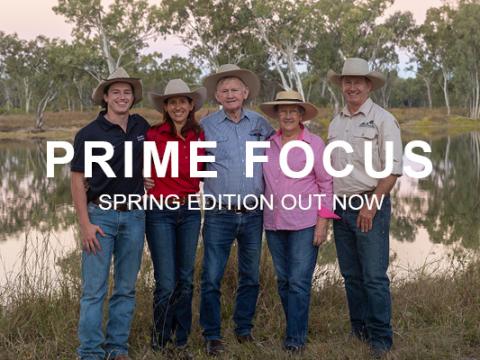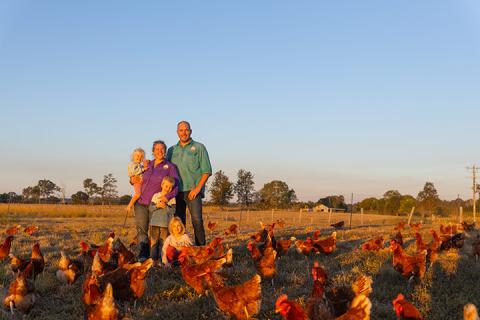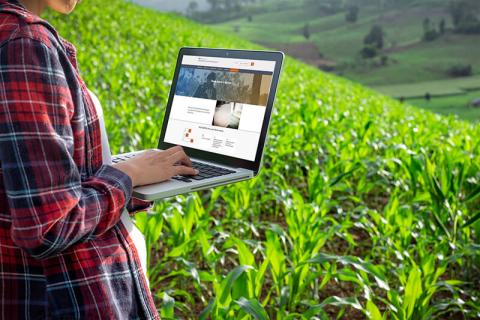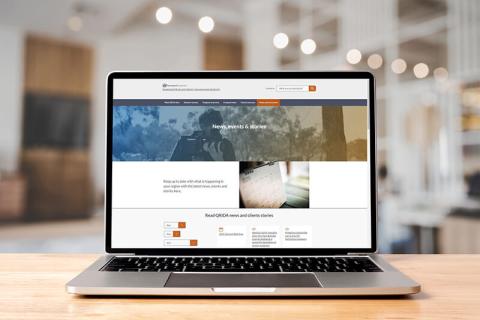Rural Landholder Recovery Grant Scheme
The Rural Landholder Recovery Grant Scheme offers grants of up to $10,000 for clean-up and reinstatement activities to help rural landholders pay for the costs of clean-up and reinstatement of their primary production enterprise that has suffered damage as a result of 2023-2024 disaster events.
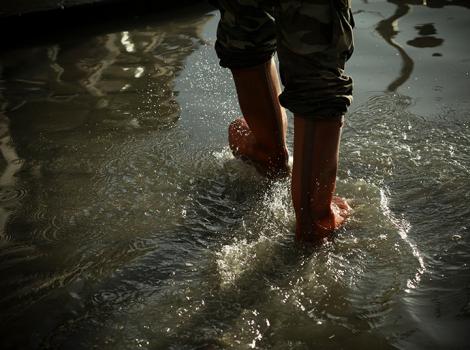
Applications for these grants close on 31 March 2025.
What assistance is available?
The Rural Landholder Recovery Grant Scheme provides a rebate to rural landholders to help pay for the costs of clean-up and reinstatement of a primary production enterprise that has suffered direct damage as a result of an eligible disaster.
Grants of up to $10, 000 are available to assist with clean and reinstatement activities. To be eligible for assistance the relevant property must be located within a local government area activated for a 2023 – 2024 disaster event and have not already received other disaster grant or loan assistance from any of these events. To understand how funding may be used please read the guidelines below.
Eligibility criteria
To be eligible for a rebate under the scheme, the applicant must:
- be the owner, or lessee under a long term lease, of land of at least 10 hectares (24.7 acres) in the defined disaster area on which the applicant operates a primary production enterprise;
- hold an Australian Business Number (ABN) and have held that ABN at the time of an eligible disaster;
- have been engaged in carrying on the primary production enterprise when affected by an eligible disaster;
- in the 2022/23 financial year have earned at least $20,000 gross income from the primary production enterprise on the affected property;
- in the 2022/23 financial year have a combined gross off-farm income of no more than $250,000;
- be primarily responsible for meeting the costs claimed in the application;
- intend to re-establish the primary production enterprise in the defined disaster area for an eligible disaster; and
- not have received assistance related to the eligible disaster under the Disaster Assistance Loans Scheme (Primary Producers) or the Special Disaster Assistance Recovery Grants Scheme (Primary Producers) in relation to the eligible disaster.
Local government areas in the defined disaster areas
Tropical Cyclone Jasper, associated rainfall and flooding, 13 – 28 December 2023
- Cairns Regional Council
- Cassowary Coast Regional Council
- Cook Shire Council
- Douglas Shire Council
- Hinchinbrook Shire Council
- Hope Vale Aboriginal Shire Council
- Mareeba Shire Council
- Tablelands Regional Council
- Wujal Wujal Aboriginal Shire Council
- Yarrabah Aboriginal Shire Council
Southern Queensland Bushfires, 8 September – 7 November 2023
- Bundaberg Regional Council
- Central Highlands Regional Council
- Gladstone Regional Council
- Maranoa Regional Council
- North Burnett Regional Council
- South Burnett Regional Council
- Southern Downs Regional Council
- Toowoomba Regional Council
- Western Downs Regional Council
Northern Queensland Bushfires, 18 October – 8 December 2023
- Cook Shire Council
- Flinders Shire Council
- Mareeba Shire Council
- McKinlay Shire Council
- Tablelands Regional Council
Submitting your application
To be considered for a Rural Landholder Recovery Grant please submit a completed application form, accompanied by the documentation stated on the application form. This includes a rates notice/lease agreement, 5-10 photographs of the damage, evidence of expenditure and details of any insurance.
The scheme will close to applications on 31 March 2025 or earlier if available funds have been fully used.
QRIDA administers financial assistance to disaster affected primary producers, businesses and non-profit organisations under the jointly funded Commonwealth-State Disaster Recovery Funding Arrangements (DRFA).
Related information
Rural Landholder Recovery Grant Scheme - Establishment Notice (PDF, 64KB) Activation Summary - TC Jasper, associated rainfall and flooding, and Southern QLD Fires Exceptional circumstances funding packages summary - Northern QLD Bushfires Australian Taxation Office (ATO) AssistanceFrequently asked questions
A rural landholder is an entity that -
(a) is the owner, or lessee under a long term lease, of relevant land on which the landholder carries out a primary production enterprise; and
(b) was carrying out the primary production enterprise on the relevant land at the time the eligible disaster caused loss or damaged to the enterprise.
Grant funding is not guaranteed at any stage of the application process and QRIDA is only able to approve applications subject to the availability of funds.
Normal staffing costs are ineligible unless it can be demonstrated that additional costs are incurred for clean-up and reinstatement purposes.
- Permanent employees (including permanent full-time and permanent part-time): only the cost of additional hours worked over and above their normal work hours for clean-up and reinstatement may be eligible.
- Contractors, casual or temporary employees: only the cost of hours worked specifically for clean-up and reinstatement may be eligible.
- Business owner: not eligible to claim a wage for clean-up and reinstatement.
- Evidence required to substantiate a claim may include:
- invoices from contractors and payroll summaries signed by the applicant verifying staff, wages cost and activity undertaken for clean-up and reinstatement.
Yes, you may potentially receive both a Disaster Assistance Loan for a small business and a Rural Landholder Recovery Grant. You may also be eligible to receive assistance under the Special Disaster Recovery Grants for a small business.
You however may not receive a Rural Landholder Recovery Grant in addition to Disaster Assistance Loan primary producers or a Special Disaster Recovery Grant for primary producers.
You are able to use relatives to repair your damage as long as transactions are retained at arm’s length and conducted in the same way as with any other contractor. Any contractors used must have an ABN and provide a tax invoice and official receipt for work completed. QRIDA may request additional information in these circumstances to confirm the validity of the claim.
You are not eligible for assistance if you are entitled to receive a payment under an insurance policy for costs directly associated with eligible activities. However, you may be eligible for a grant for costs that are not covered by insurance, or for amounts in excess of the value insured.
Applicants must claim on any applicable insurance policy, including business continuity, prior to seeking reimbursement under the Disaster Recovery Funding Arrangement.
The Scheme does not cover repairing houses or repairing or replacing household goods.
However, you can apply for assistance to repair buildings that are not used as a dwelling. The repair of buildings must be essential for the immediate resumption of the primary production enterprise.
Yes, you are able to claim assistance for the actual costs of any additional labour or fuel and oil incurred in the use of this plant and equipment for clean-up and reinstatement activities for the disaster event.
Yes, you are entitled to a decision review. See reviewing a decision for more information.
Yes, as long as you can demonstrate that you as tenant (lessee) are primarily responsible for the cost of the eligible clean-up and repairs.
A lease is a legal contract that defines in broad terms the responsibilities for landlord (lessor) and tenant (lessee) in relation to repairs and maintenance. Often such leases are supplemented with other documents outlining insurances, improvements and operational matters.
QRIDA also recognise that the lessor and lessee may from time to time agree to reassign responsibility for activities within the context of their lease arrangement if both parties concur.
An applicant is required to provide a copy of their lease and any other documents to QRIDA to demonstrate that they are primarily responsible for the eligible costs being claimed.
QRIDA may also accept a co-signed statutory declaration if this assists the applicant in demonstrating they are responsible for costs being claimed or they are unable to immediately resume farming activities without meeting the cost of reinstatement of the damaged property themselves.
Such a co-signed statutory declaration for an applicant who is the lessee (tenant) should clearly state:
- That the lessor will not be meeting the costs of reinstatement of the damaged property for which the lessee (applicant) has made the grant application
- That the applicant (lessee) cannot immediately resume business activities without meeting the cost of reinstatement of the damaged property themselves
- The nature and extent of damage impacting on the immediate resumption of business activities
- Details of the reinstatement costs being claimed by the applicant which differ from the existing lease contract or other documents outlining the liabilities/responsibilities of each party and which have been agreed between the parties
- That these same costs are not covered by insurance or other government assistance.
Please note the statutory declaration does not guarantee approval of the application, but simply provides QRIDA with information clarifying liabilities and responsibilities in respect to a leased property, specifically relating to damage and costs, in order to undertake an assessment of a grant application.
No, replanting is not an eligible use of this grant funding.
QRIDA is committed to ensuring due administrative processes are undertaken with the decisioning of applications for Government assistance.
When making decisions on applications, as well as the internal review of a decision, QRIDA follows the QRIDA Decision-Making Policy and Procedure.
You can view this Policy and Procedure on the Reviewing a decision page.
